If there is one thing that people love, it’s a haunted house. We might be split on zombies, vampires, werewolves and the like, but a spooky house with long corridors and doors that open on their own, wisps of chill wind moving through a guest to a manse… yeah, everyone loves that!
For his first feature film, longtime animator and filmmaker Ashley Thorpe chose to massage the tale of Borley Rectory, considered England’s most haunted venue after researcher Harry Price dubbed it so, into a concoction of his own magickal talents. Eschewing the norms of sweeping camera movements mimicking the movements of a ghost, Thorpe chose to graphically cover the various hauntings at the mansion through constructions and a heavy dose of sprinkling ‘ghost dust’ through this telling. Thorpe’s adoration for Borley Rectory began through a children’s book “The World of the Unknown: Ghosts,” where within the story was told quite authoritatively through strong and dark visuals, so thoroughly presented that the story was embedded in his mind. Borley is mentioned by named in Shirley Jackson’s The Haunting of Hill House, and referred to indirectly in The Legend of Hill House, though the tale rattled around in the dank darp depths of Thorpe’s mind—he had to tell this story.
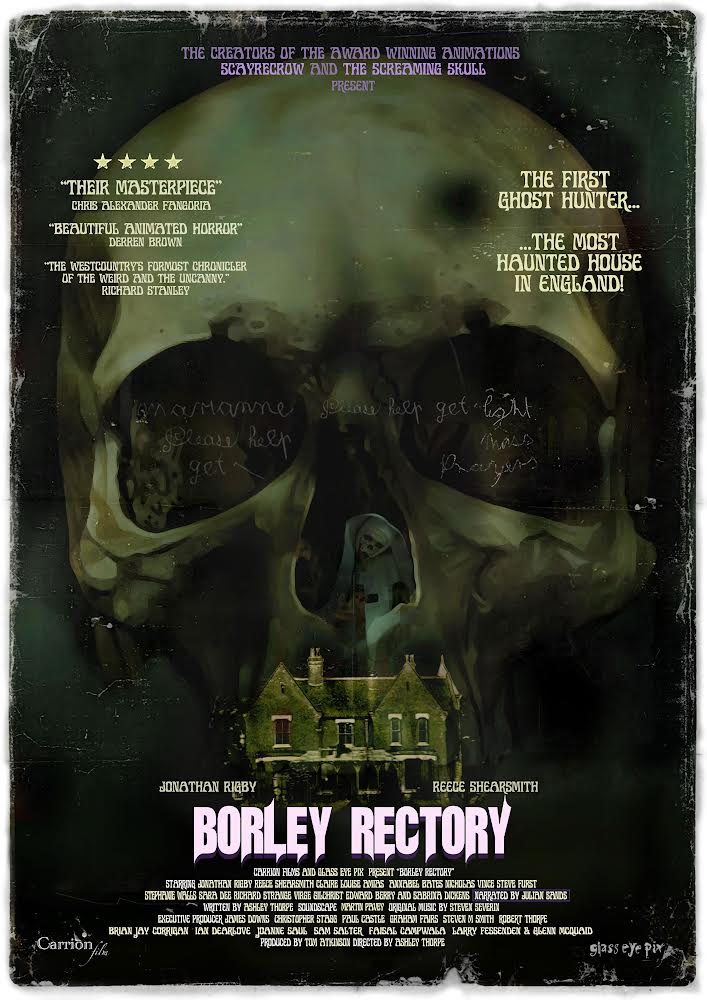
Thorpe’s work here is not based so much on an actual reality as the 1862-christened rectory burned in 1939 and was fully demolished in 1944. The legend has it that motion picture film was used to capture the ghostly essence of the home though none of that material remains. Here is where Thorpe steps in to guide us through this wretched tale. The style of BORLEY RECTORY came naturally to the auteur, instinctively, and the first thing he realize was he that a straight live action film would’ve been too limiting, and wouldn’t have allowed him to make his story so textural and expressionistic. Thorpe’s animation tends to often be a blend of styles and here he knew that using a rotoscopic / collage of both live-action and animation was always going to be the way to make it.
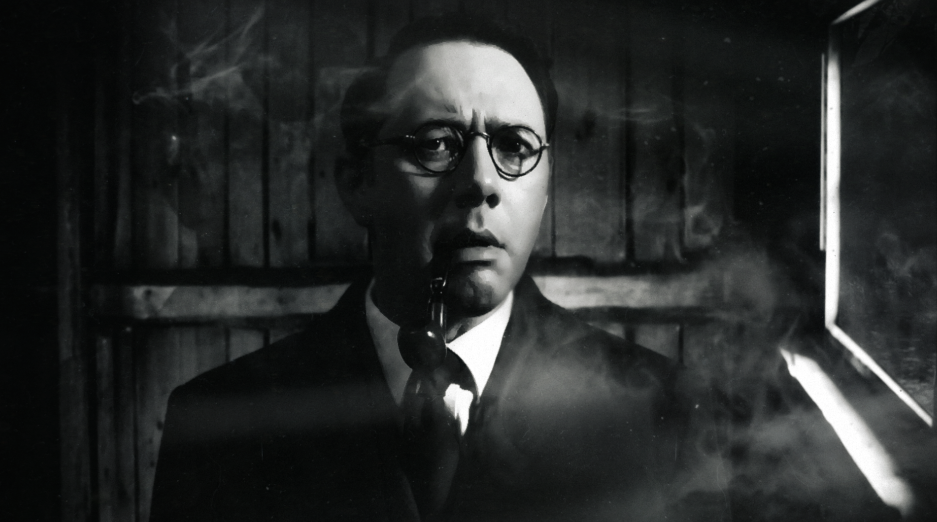
The cast’s performances were used determine the length of takes and the filming very much as a theatrical endeavor, with Thorpe encouraging the actors to be slow and ponderous, whatever felt natural in the scene. Working evenings and weekends over four years whilst working on commercial projects, Thorpe animated until the last possible day then got it all over to Martin Grierson to work on the sound. Initially to be composed by Siouxsie and the Banshees bassist Steven Severin, Grierson came in when Mr. Severin became ill and unable to work. The connection between Thorpe and his composer had already matured over the years and the pair pay homage to the film’s original composer with an on-screen credit.
In these efforts he strove to hark back to another age of the horror film, creating a contemporary feeling to the period in which the haunting actually occurred. Another consideration was to create moving images that resembled spirit photography and classic early 20th-century images of ghosts, rather than the digital spooks of modern horror. Thorpe’s ghosts are often blurs and shadows, indistinct, with the only vivid and fully realized phantoms seen in very subjective sequences seen by characters trying to mold a story, literally knitting faces from the fogs and shadows, which all feels perfectly suited to the material. The history of Borley Rectory is such a historic conglomeration of fact and fiction, myth and conjecture, often told by mercurial mysterious characters, that the motion-spiked marriage of animation and live-action was ideally suited to his approach.
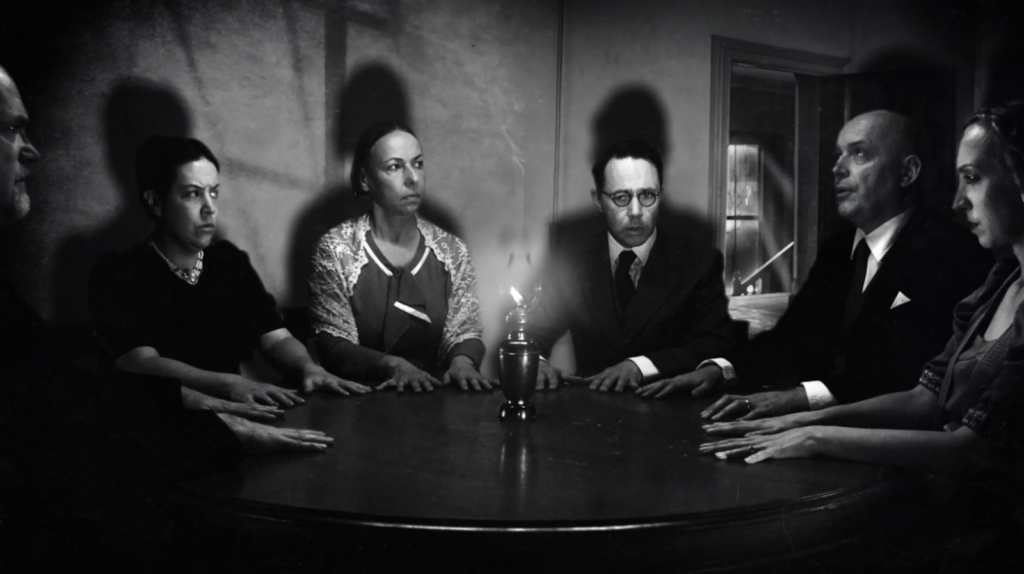
Joined by Julian Sands as the narrator, and Jonathan Rigby and Reece Shearsmith in the photographed cast placed inside the reconstructed scenery of the Borley Rectory is like visiting sections of Disneyland’s Haunted Mansion, or at least the entry portals for many haunted attractions. The merger of reality and fiction, actual people and reconstructed sets, creates a sensation of timelessness, and entry, a place you can inhabit, a haunted home you can visit.
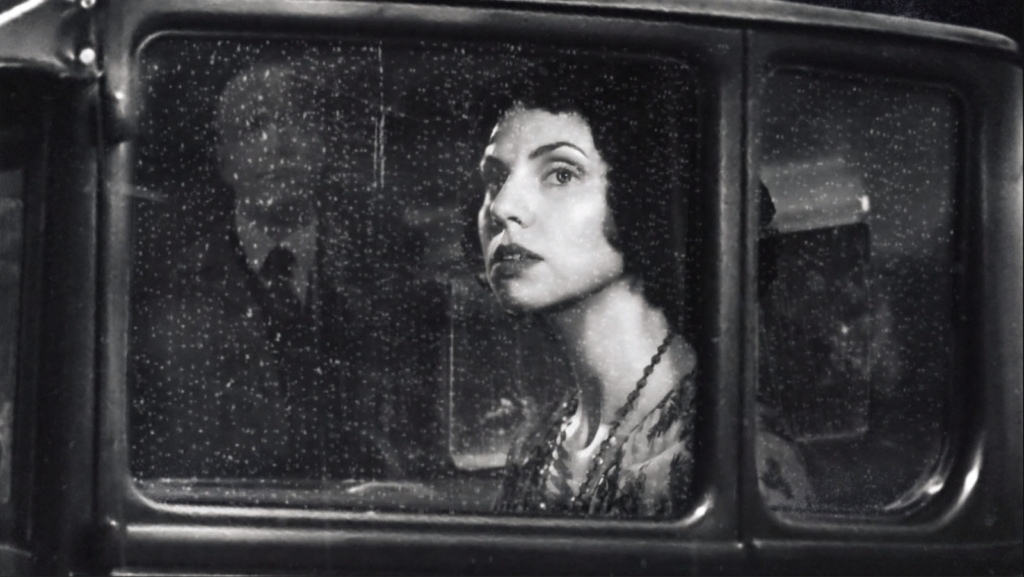
Clocking in at a brisk 73 minutes, the Blu-ray from Nucleus Films contains a vast six hours of additional materials. Film festival appearances, Q&A sessions with the screenwriter Stephen Volk, and historic claims brought to light by various haunt researchers, BORLEY RECTORY may not be the very last word on this abandoned abode, though you’ll definitely feel like you’ve spent at least one good black night in the long-gone home. Only imagination can make it come to ‘life’ even more strongly.
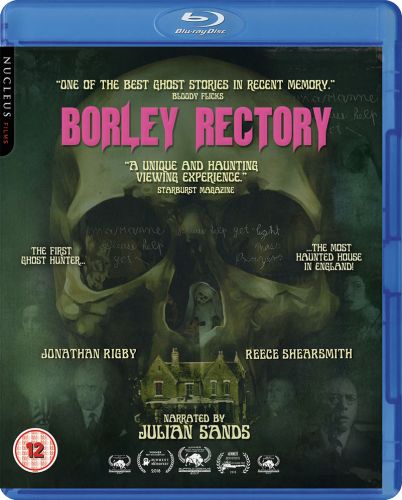
The Blu-ray, available now from Nucleus Films, includes:
- 5.1 DTS / 2.0 PCM
- Optional English Subtitles
- Audio Commentary 1: Ashley Thorpe and Kevin Lyons (EoFF)
- Audio Commentary 2: Horror Historian Johnny Mains
- Ultrasound of a Haunting: The Making of BORLEY RECTORY (105 mins)
- Haunted Generation: The Legacy of Usborne’s World of the Unknown Children’s Book Series (32 mins)
- The History of Borley Rectory: The Most Haunted House in England (with Stewart Evans, Paul Adams and Eddie Brazil) (60 mins)
- Anatomy of a Scene: Animating BORLEY RECTORY (10 mins)
- Celluloid Screams: On Stage Q&A with Ashley Thorpe & Nicholas Vince (32 mins)
- At the Mercy of Ghosts: In Conversation with Stephen Volk (30 mins)
- Night Visions: Borley Rectory in Helsinki (24 mins)
- Reece Shearsmith & Jonathan Rigby: Q&A at the British Library (17 mins)
- Grimmfest Interview (11 mins)
- Conjuring the Spirits: Making the Borley Rectory Ouija (10 mins)
- 2 x Teaser Trailers
- Trailer
- Gallery
- Plus Ashley Thorpe’s Early Short Films:
- Harry Price and the Martian Lighthouse (5 mins)
- Scayrecrow (12 mins)
- The Hairy Hands (12 mins)
- Screaming Skull (10 mins)
Tags: Animation, Annabel Bates, Ashley Thorpe, Blu-ray, Claire Louise Amias, England, Ghosts, Haunted Houses, Jonathan Rigby, Julian Sands, Nucleus Films, Reece Shearsmith, Stephen Volk, The UK


No Comments